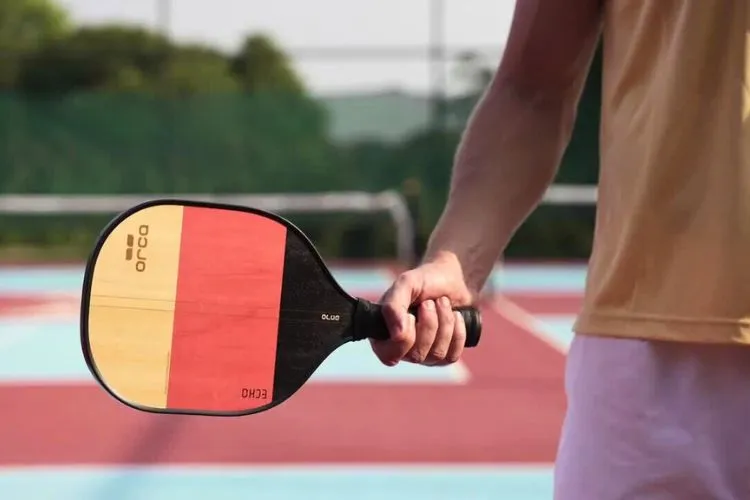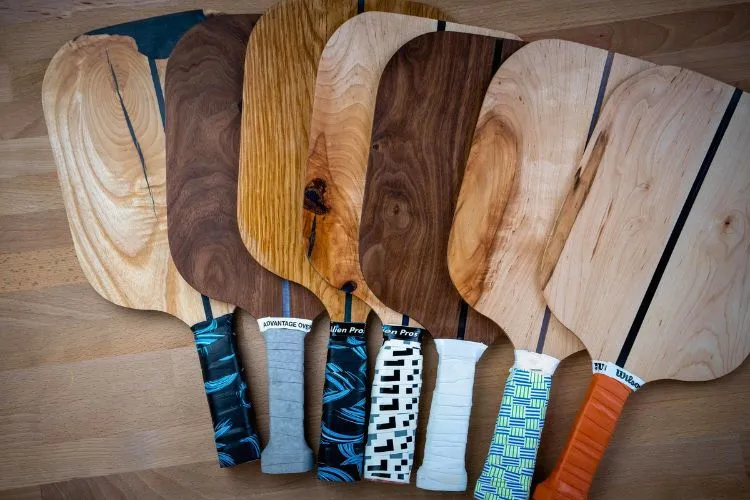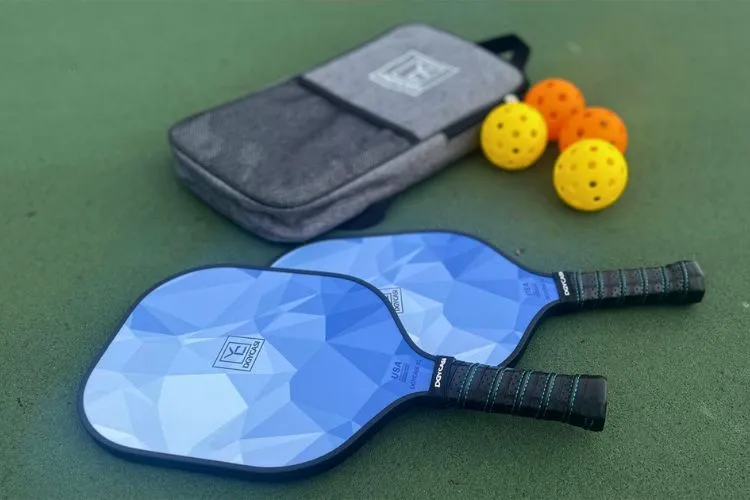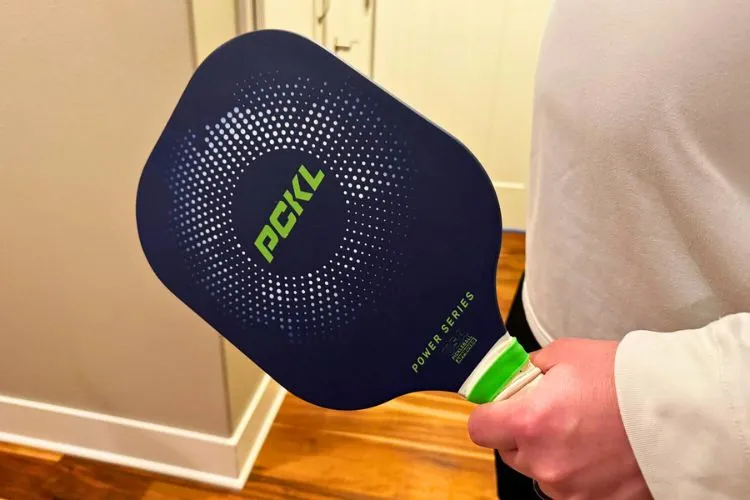Pickleball’s rise to popularity is nothing short of remarkable. With more people joining the sport, the choice of equipment, especially paddles, is crucial.
While there have been numerous advancements in paddle technology, wooden pickleball paddles remain a topic of interest.
But, are wooden pickleball paddles good?
In this article, we delve into the world of wooden paddles to explore their relevance and performance in today’s pickleball game.

History of Pickleball Paddles
Pickleball has a rich history that dates back to the mid-1960s. The first paddles were simple makeshift equipment fashioned from plywood. Over the years, pickleball paddles have evolved significantly.
However, wooden paddles have continued to hold their ground, serving as a reminder of the sport’s humble beginnings.
Why Consider Wooden Pickleball Paddles?
One of the most appealing aspects of wooden paddles is their affordability. They are often cheaper than their composite or graphite counterparts, making them an attractive option for beginners or schools.

In addition to being cost-effective, wooden paddles are known for their durability. They can withstand a lot of use without showing significant wear and tear.
Wooden paddles are also readily available in the market.
Are Wooden Pickleball Paddles Good?
Wooden paddles tend to be heavier. This can affect gameplay in several ways. Their weight can offer more power but might reduce control and speed.
The sound of a wooden paddle striking the ball is unique and can affect players differently. Some find the sound satisfying, while others prefer the quieter hit of modern paddles.
Pros of Wooden Pickleball Paddles
For those new to pickleball, the simplicity and ease of use of wooden paddles can be very appealing. They offer a no-frills option for learning the basics of the game.
Additionally, there’s a certain vintage charm to playing with wooden paddles, evoking nostalgia for the early days of pickleball.
Cons of Wooden Pickleball Paddles
The main drawbacks of wooden paddles are their weight and lack of advanced features. Heavier paddles can be more challenging to handle, making quick responses difficult.
They also lack the specialized grips, edge guards, and larger sweet spots found on more modern paddles. Wooden paddles are also more susceptible to damage from weather and moisture.
Who Should Consider Using Wooden Pickleball Paddles?
Wooden paddles are best suited for beginners, players on a budget, or those looking for a traditional pickleball experience.
They are also an excellent choice for educational environments where durability and cost are primary concerns.
Transitioning from Wooden to Modern Paddles
As players develop their skills, they may find that a wooden paddle’s limitations hinder their progress. Upgrading to a composite or graphite paddle can offer improved performance.

When making this transition, consider what you liked and disliked about the wooden paddle to choose the best fit for your needs.
Care and Maintenance of Wooden Paddles
To extend the life of a wooden paddle, proper care is essential. Store them in cool, dry places away from direct sunlight.
Regularly checking for damage and applying a protective finish can also help protect the paddle from the elements.
Personal Stories: Transitioning from Wooden
Many experienced players started with wooden paddles and later switched to more advanced materials.
These players often reflect on the transition as a pivotal moment in their pickleball journey, offering insights and tips for others considering making the switch.
Comparative Analysis: Wooden vs. Composite vs. Graphite Paddles
Weight: Wooden paddles are the heaviest, offering power but potentially reducing quickness in volleys. Composite and graphite paddles are significantly lighter, allowing for swifter movements and longer play without fatigue.

Control: Graphite paddles excel in control due to their light weight and stiff nature, helping players execute precise shots. Composite paddles also offer good control with a bit more power, while wooden paddles, due to their weight, might lack finesse in precise shot-making.
Power: The heavy nature of wooden paddles can translate into powerful shots, but with a potential sacrifice in speed and accuracy. Composite paddles strike a balance between power and control, making them versatile. Graphite paddles, though excellent for control and quick play, might not provide the same level of power as wooden or composite options.
Durability: Wooden paddles are durable and can handle a lot of abuse but are susceptible to environmental damage like warping. Composite and graphite paddles are engineered for longevity, resisting wear and tear from gameplay and elements more effectively.
Each type offers unique advantages, with the choice often boiling down to player preference, style, and priorities on the court.
Pro Tips
When transitioning from wooden to more advanced paddles, consider what you want to improve in your game. This will guide your choice for the next paddle.
Even if you start with a wooden paddle, exploring different types of drills can maximize your playing experience.
Finally, for those who choose wooden paddles for educational purposes, focusing on fundamentals over advanced techniques can yield significant benefits.
Frequently Asked Questions (FAQs)
u003cstrongu003eAre wooden pickleball paddles approved for official tournaments?u003c/strongu003e
Yes, wooden paddles are approved for most official tournaments, provided they meet the specific equipment standards set by the governing body.
How do wooden paddles compare to modern paddles in terms of performance?
Wooden paddles are heavier and offer less control than modern composite or graphite paddles. They also lack advanced features like specialized grips and larger sweet spots.
Can playing with a heavy wooden paddle improve your game?
Playing with a heavier paddle can strengthen your arms and improve power shots. However, it might also slow down your reaction times and control over the ball.
How do you customize a wooden pickleball paddle for better grip and comfort?
Adding an aftermarket grip over the existing handle can improve comfort and grip. Some players also apply protective tape around the edges to minimize damage.
Are there any top brands that still produce high-quality wooden paddles?
Yes, several top brands offer high-quality wooden paddles. These paddles often cater to beginners or schools looking for durable, cost-effective equipment.
Conclusion:
While wooden pickleball paddles may seem outdated to some, they still have a place in the sport, especially for beginners or those on a budget.
However, as players progress, the limitations of wooden paddles might lead them to consider modern options.

Pickleball’s more than a game to me—it’s a passion. I write, sharing its highs and lows, the thrills and the lessons. Some tales might draw you to the court, while others give a hint of the game’s magic. So, curious about my journey? Ready to dive deep into the world of pickleball with me? Let’s go.
